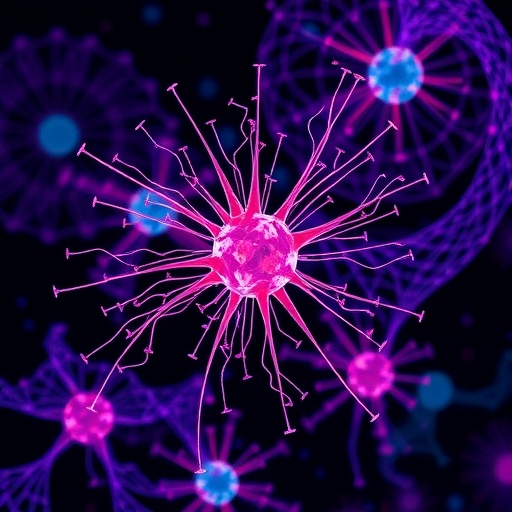In a groundbreaking leap forward for neonatal care, researchers have developed a deep learning algorithm capable of precisely assessing the insertion depth of laryngoscopes during neonatal intubation using real-time video laryngoscopy. The pioneering study, spearheaded by a collaborative team of clinicians and computer scientists, addresses one of the most critical challenges in neonatology—ensuring accurate and safe airway management in newborns, particularly in the fragile neonatal intensive care setting. This advancement could radically transform bedside procedures, reducing complications and improving outcomes.
Neonatal intubation, the process of inserting a tube into an infant’s airway to assist breathing, is a delicate and high-stakes procedure. Unlike adult intubation, the anatomical structures of neonates are significantly smaller and more vulnerable, making accurate laryngoscope insertion depth crucial. Over-insertion can cause trauma, while under-insertion may result in inadequate ventilation. Current methods rely heavily on practitioner expertise and visual cues, which are often subjective and prone to error.
The newly developed technology harnesses the power of deep convolutional neural networks (CNNs) trained on extensive video laryngoscopy footage. By analyzing frames in real-time, the deep learning model identifies key anatomical landmarks and calculates the precise depth of laryngoscope blade insertion. This approach represents a significant innovation, exploiting artificial intelligence’s capability to decipher nuanced visual patterns that may elude even experienced clinicians.
Central to the system’s design was the creation of a comprehensive annotated dataset capturing a wide variety of neonatal airway views. The research team meticulously labelled thousands of laryngoscopic images to provide a rich set of training examples. This dataset includes variations in gestational age, airway anatomy, lighting conditions, and operator technique, ensuring the model’s robustness across diverse clinical scenarios.
The deep learning model employs a multi-stage processing pipeline. Initially, it segments the airway structures visible in each frame, such as the epiglottis, vocal cords, and surrounding soft tissue. Subsequently, it computes the blade’s position relative to these landmarks to deduce exact insertion depth. Integrating temporal information from sequential video frames enhances the model’s accuracy by smoothing abrupt changes and reducing false detections.
Validation of the algorithm was performed through rigorous clinical trials involving neonatal intensive care units across several institutions. The model’s predictions were compared with expert clinician assessments and direct measurement techniques. The results demonstrated an impressive accuracy rate, outperforming conventional methods and offering real-time feedback with minimal latency, crucial for urgent interventions.
One of the fascinating outcomes of this research is its potential to serve as an intelligent assistant during neonatal intubation. By providing continuous, objective feedback on laryngoscope position, the tool can alert clinicians to potentially hazardous insertion depths, preventing injury and improving success rates on the first attempt. This capability is especially beneficial for less experienced practitioners or in high-pressure emergency contexts where precision is key.
From a technical standpoint, the deep learning framework was optimized to function on portable devices integrated with existing video laryngoscope hardware. This seamless compatibility facilitates clinical adoption, ensuring minimal disruption to established workflows. Moreover, the software’s design emphasizes user-friendly interfaces displaying critical insertion metrics alongside the live video feed for intuitive interpretation.
Extending beyond immediate clinical application, the researchers envision future iterations leveraging federated learning models. Such models can learn from distributed data across multiple hospitals without compromising patient privacy, thus continuously improving accuracy and adaptability to evolving clinical environments. This aspect underscores the potential for widespread, scalable deployment in neonatal care worldwide.
The implications of this technology stretch into training and education as well. Simulation-based learning modules equipped with AI-driven feedback on laryngoscope positioning can significantly enhance medical trainee skill acquisition, reducing the learning curve and promoting safer neonatal intubation practices. Ultimately, this aligns with broader efforts to integrate artificial intelligence into procedural medicine.
Despite the promise, certain limitations remain. The model’s current configuration predominantly focuses on laryngoscope depth assessment, leaving other critical parameters such as tube placement post-insertion to future enhancements. Additionally, while trained extensively, edge cases featuring abnormal airway anatomies may pose challenges. Continuous refinement with expanded datasets is anticipated to address these issues over time.
Ethical considerations surrounding AI-assisted medical devices have also been thoughtfully evaluated. The research team emphasizes that the technology is designed as an adjunct—augmenting, not replacing—clinical judgment. Transparency in algorithm decision-making and rigorous validation protocols ensure that patient safety and accountability remain paramount.
The study is published in the Journal of Perinatology and stands at the intersection of cutting-edge AI research and neonatal healthcare innovation. It exemplifies how interdisciplinary collaboration can yield transformative tools tailored to meet the nuanced demands of vulnerable patient populations. As neonatal mortality and morbidity are closely linked with airway management, such technologies bear the potential to save countless lives globally.
In summary, this new deep learning-powered video laryngoscopy system offers a landmark advancement for neonatal intubation safety. By providing automated, precise insertion depth assessment at the bedside, it sets the stage for improved clinical outcomes, enhanced procedural training, and the broader integration of AI in critical care settings. As further validation and commercial development occur, the impact of this innovation is poised to resonate across NICUs worldwide, heralding a new era in neonatal airway management.
Subject of Research: Assessment of laryngoscope insertion depth during neonatal intubation using deep learning-based video analysis.
Article Title: Deep learning to assess laryngoscope insertion depth during neonatal intubation with video laryngoscopy.
Article References: Majeedi, A., Peebles, P.J., Li, Y. et al. Deep learning to assess laryngoscope insertion depth during neonatal intubation with video laryngoscopy. J Perinatol (2025). https://doi.org/10.1038/s41372-025-02457-0
Image Credits: AI Generated
DOI: https://doi.org/10.1038/s41372-025-02457-0
Tags: artificial intelligence in airway managementclinician-computer scientist collaborationdeep convolutional neural networks applicationdeep learning in neonatal careimproving outcomes in newborn intubationInnovative healthcare technologieslaryngoscope insertion depth assessmentneonatal intensive care advancementsneonatal intubation techniquesprecision in medical proceduresreal-time video laryngoscopy technologyreducing complications in neonatal procedures




